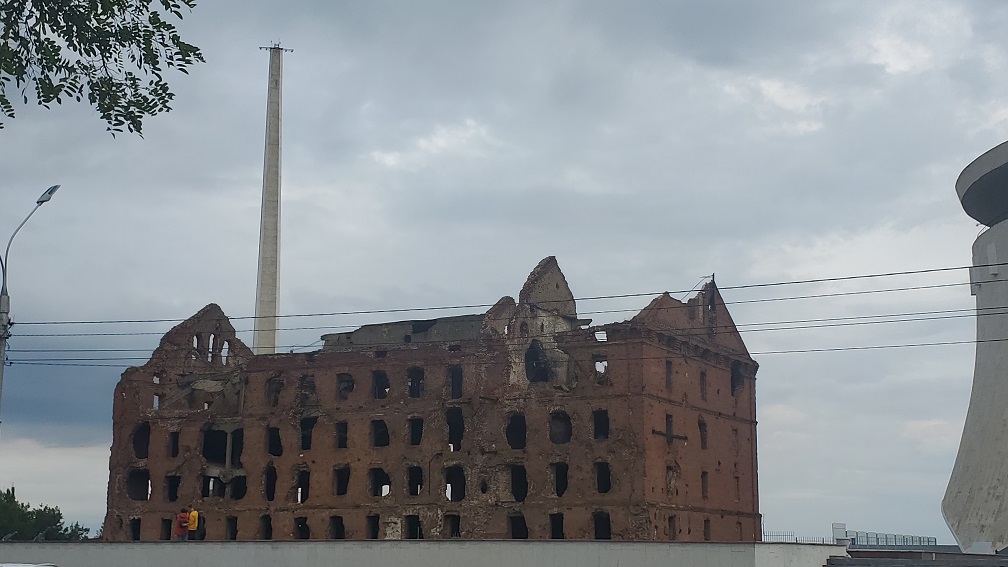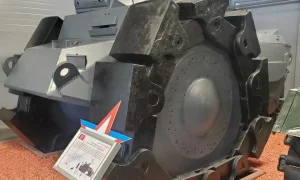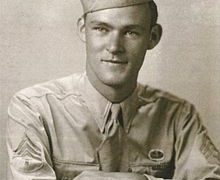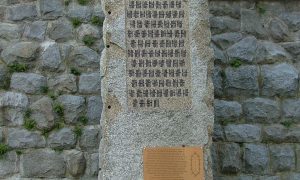History of Gerhardt’s Mill
Not to be confused with Pavlov’s House – both buildings were destroyed during the Battle of Stalingrad, but Pavlov’s House was restored, and the mill was left as a destroyed monument.
The history of the mill begins in 1899, when the Gerhardt family of entrepreneurs received permission to build a flour-grinding complex in the “Balkans” (the unofficial name of the northern outskirts of Tsaritsyn, roughly from the modern House of Officers to the Volga named Balkan Square). Transport logistics was very convenient: from the west of the Gryaze-Tsaritsyn railway (now the existing tracks Volgograd branch of the Privolzhskaya railway) to the mill was a railway track (dismantled after the Great Patriotic War), from the east a few tens of meters to the Volga pier and the South-Eastern railway (tracks along the Volga coast were dismantled in the 1930s). Before construction, there was an illegal squatter construction on this site. Construction began in June 1899. On July 20, 1900, the mill was put into operation and flour sales began on August 1, 1900. The mill worked until the fire on August 8, 1907, when only a stone frame remained from it.
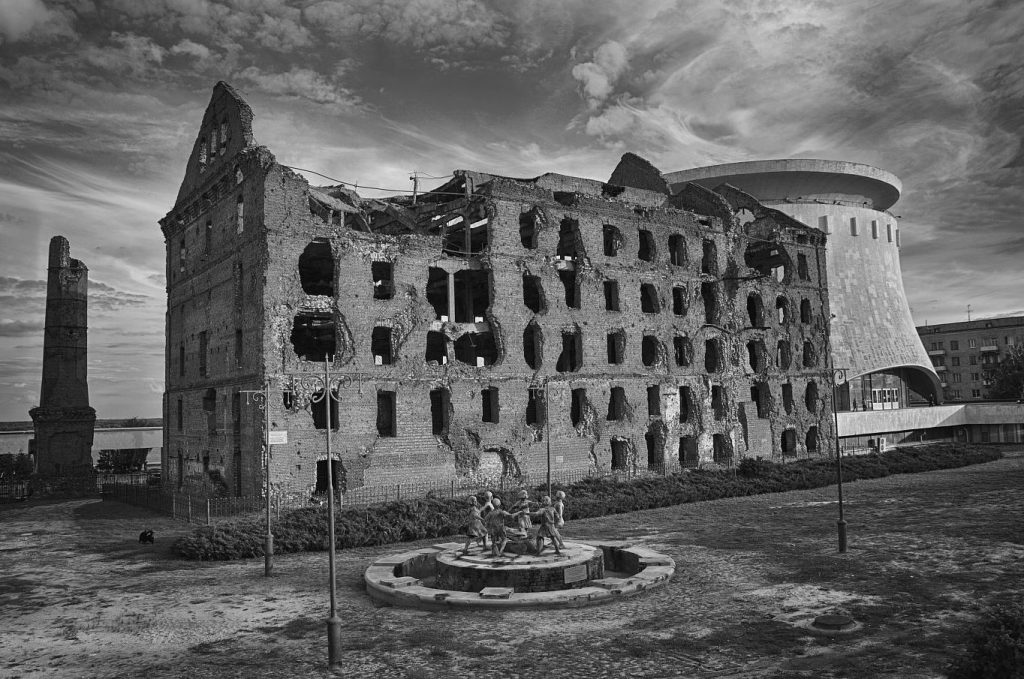
A new building was built on the same site by May 1908. Despite the name “mill”, a food processing complex was built, where, in addition to the flour mill, there were also fish-smoking, oil-milling, bakery shops, warehouses for finished products. The technical equipment used the most advanced technologies of its time: its own electric generator, which gave independence from the city power grid, its own boiler room, from which a brick pipe was preserved, internal mechanical conveyors (broken remains were preserved). In 1911, the Gerhardt and Heirs enterprise employed 78 workers with 165 working days with a working day of 10.5 hours. The paid wages for the year amounted to 10342 rubles, the annual turnover of the enterprise was 1 270 000 rubles.
The mill building is one of the first in Tsaritsyno, built using the technology of a supporting reinforced concrete frame and an outer shell of brick walls. Although such construction was a novelty for the city – it was a typical project for a steam mill of the early 20th century, similar buildings were built during this period throughout the Russian Empire. The building is divided into two unequal parts by a firewall… In the greater northern part there were production workshops, in the lesser southern part there were warehouses for finished products. On both end walls at the level of the roof, there is a brick inscription “Gergardt” – the name of the owner, Volga German Alexander Gergardt. The same inscription is lined with bricks of a different shade on the Volga side of the building, on the 5th floor, one letter at a time between the window openings. The inscription on the southern end was lost in 2021 as a result of an emergency collapse of brickwork. The building was whitewashed, the remains of whitewash were preserved on the Volga side of the building. In addition to the building on plot 346, 2 wooden grain warehouses were built along Kazanskaya Street, a one-story office building and garage boxes along Penza Street (they were not restored after the war). In Soviet times, the mill was nationalized, among the Stalingrad mills it received number 4. In 1929 it was named after Konstantin Grudinin.
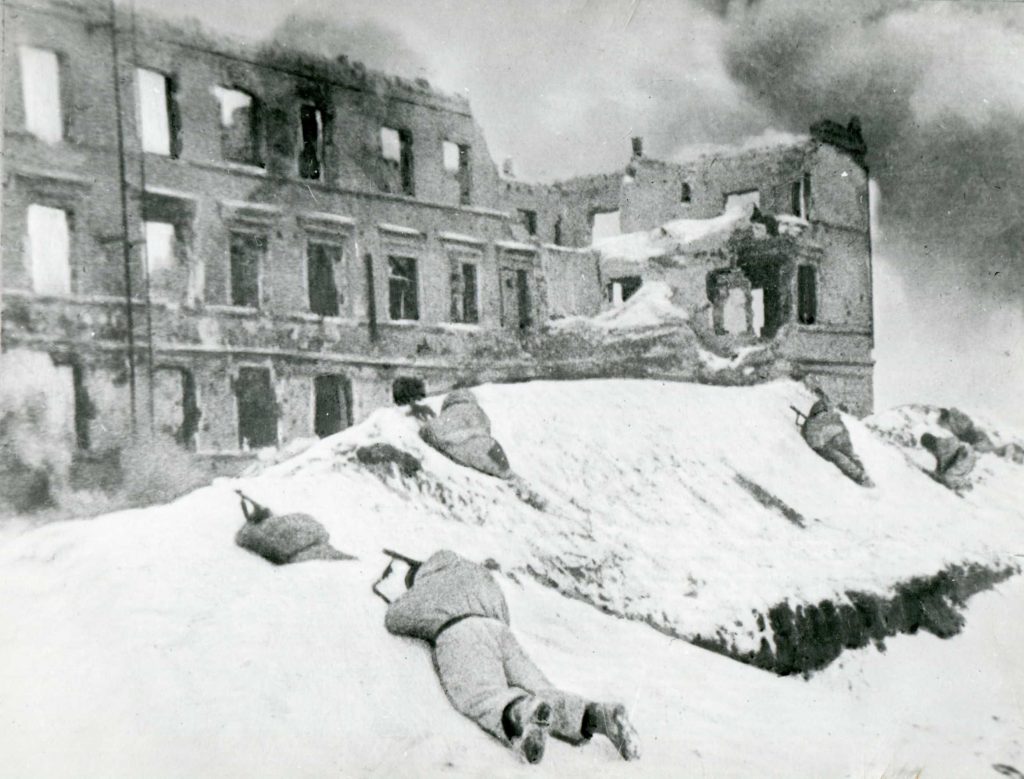
During the Battle of Stalingrad
The mill operated until September 14, 1942, when high-explosive bombs hit the building, which caused a fire and a work stoppage. On this day, the 42nd Rifle Brigade of General Batrakov, which was defending the central part of Stalingrad, retreated and fought in a small area near the River Station. In the Department store, the building of the railway station, the building of the drama theater, the prison on Golubinskaya Street, there are still surrounded Soviet centers of resistance from the scattered rear units of the 62nd Army and the people’s militia from Stalingrad police officers, firefighters, and workers. On the night of September 14-15, the 13th Guards Rifle Division crossed the Volga to correct the catastrophic situation. General Rodimtsev’s unit of Lieutenant Chervyakov occupied the building, left it in the rear and continued the offensive to help the 10th division of the NKVD, surrounded near the station. However, after fierce battles from September 15 to 20, it was not possible to gain a foothold at the railway station, the surviving Soviet soldiers retreated to the mill.
The specificity of the battles in the residential area of Stalingrad was the capture of defense centers – buildings or a group of buildings with powerful walls and basements that could withstand direct hits from bombs and shells. Such a defense center served as a shelter for the garrison, organizing an assault group to attack the enemy. There was no solid front line. Wooden, one-story buildings, buildings with adobe walls were ignored and served as a neutral zone. On this strip, reconnaissance was conducted, snipers were hiding, sappers planted mines, but there was no permanent garrison.
By September 20, the line of defense was established, the 3rd battalion of the 42nd rifle regiment of the 13th Guards rifle division took up defense in the mill. The square on January 9 became a neutral zone, from the west of the mill the Germans seized the “dairy” house, from the north the L-shaped house, from the south the State Bank and the NKVD complex. All of them became German defense centers and surrounded the buildings held by Soviet soldiers on three sides. Mill, Pavlov’s house and Zabolotny became the “Penza” defense center (after the name of Penza street), and the mill building remained the only multi-storey building in the area of the central embankment, held by Soviet troops and, as very massive and strong, – the citadel of the Penza defense center. The last remaining supply route – the salt pier of the central embankment near the Volga – was used only at night, with great risk to floating crafts. Under the current conditions, this pier has become a very important strategic site – one of the few gentle slopes to the Volga. From this section it was convenient to hold a bridgehead on the western bank of the Volga (which was done by the 13th Guards Rifle Division), and to control as a place of possible crossing to the eastern bank.
The front began to move in January 1943, the 13th division launched an offensive in the Mamayev Kurgan area, the 9th January area ceased to be a no- man’s -land. Only then was it possible to collect the bodies of those killed in the square, lying still from the September battles, and those killed in the winter period. They were buried in a mass grave on the square, after the war a granite monument was made over it at at the place, there are no names on this mass grave, although it is possible to establish some of them.
The building was semi-encircled for 58 days, and during these days it withstood numerous hits from aerial bombs and shells. This damage is visible even now – literally every square meter of the outer walls is cut by shells, bullets and shrapnel, on the roof, reinforced concrete beams are interrupted by direct hits from aerial bombs. Explosions knocked out hundreds of cubic meters of very high-quality brickwork and reinforced concrete from the building. The sides of the building testify to different intensity of mortar and artillery fire – minimal from the Volga, from the other three sides traces of shooting from all types of artillery are visible, as well as loopholes in the window openings made by the defenders of the house. The increased strength and vibration resistance of the reinforced concrete frame originally incorporated into the structure helped the building to survive.
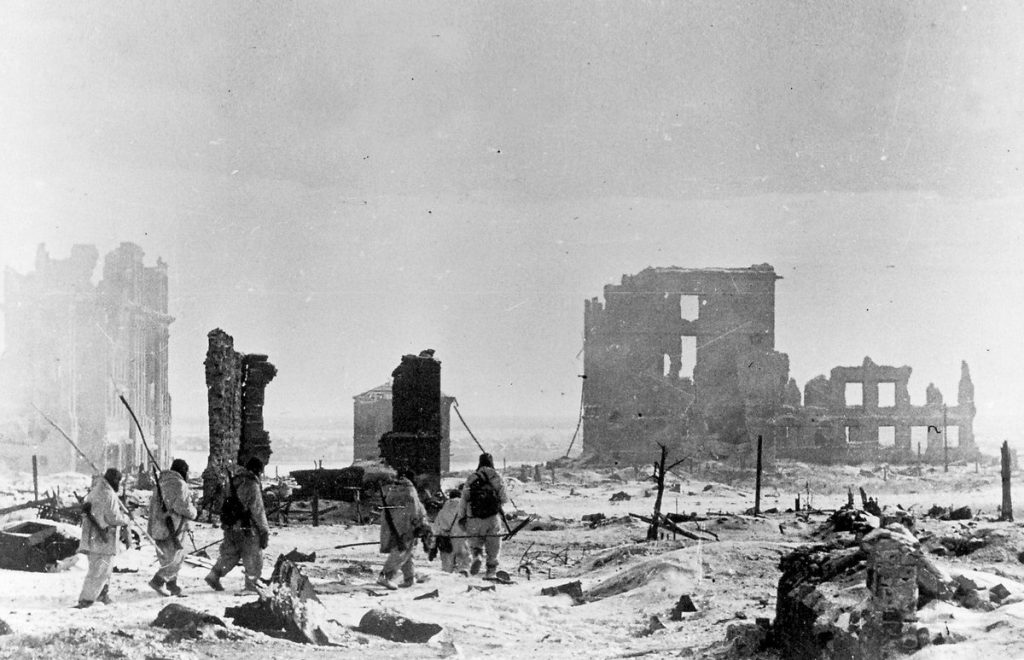

Interesting Facts
- The building had a “twin” – the second mill of Gerhardt in the floodplain of the Tsaritsa River at. It also withstood the Battle of Stalingrad, having received significant destruction, also did not recover after the war and in the 1960s was covered with soil during the construction of the Chekistov Square station of the Volgograd Metro Tram… This building shared the fate of several more mills of Tsaritsyn entrepreneurs Miller and Turkin, who were buried on the slopes of the Tsaritsa River in the 1950s-1960s, despite the preservation of the “boxes” of buildings. Nevertheless, two buildings of Tsaritsyn mills have survived in Volgograd: the operating enterprise “Sareptskaya Mill” – the former steam mill of the Bauer brothers – and rebuilt after the war into an administrative building at 6 Kirsanovskaya Street. The mill building is one of three buildings that were deliberately left unrepaired after the Battle of Stalingrad. The other two are the building of the command post of the 138th division on Lyudnikov Island and the building of the factory laboratory of the Krasny Oktyabr plant.
- In 1943 and several subsequent years, due to the catastrophic shortage of premises in the destroyed city, some rooms of the mill building were minimally repaired and populated. After the decision to create a memorial museum was made, all traces of post-war repairs were dismantled.
- Until the 1980s, excursions were allowed inside the building.
- Tourists and residents of the city often confuse the Gerhardt Mill with the Pavlov House, located on the opposite side of the street.


